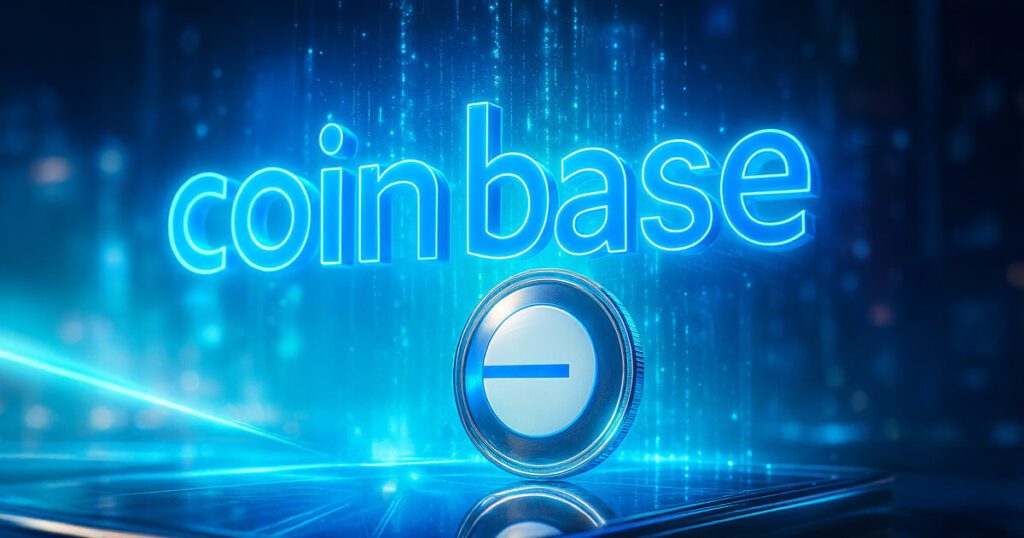For years, crypto advocates have argued that blockchain will one day move everything from messaging to micropay. Coinbase now claims that the future is arriving within one icon on a mobile phone.
On July 16th, the exchange quietly began to deploy the “base app.” This is a reconstructed version of a mobile wallet that mashes transaction, payments, social media, and field AI agents. For now, the limited beta, open only to users on the waitlist, marks the boldest consumer pivot in Coinbase’s 12-year-old history, turning the layer-2 network within it, Base, into the backbone of the experience.
“Every post on the app is a coin,” the product blog teased, framing a redesign as a way for creators to create and monetize content on the fly.
From replacement fees to platform flywheels
Coinbase is collecting most of its revenue from trading spreads that regulators, rivals and bare markets are all threatening to squeeze. Therefore, CEO Brian Armstrong has spent the past two years sketching out broader ambitions. This is the American counterpart of Wechat, China, where money, chat and e-commerce coexist.
In the state of Crypto Summit in June 2023, Armstrong argued that “super apps” pinned to open protocols could unlock fundamentally low rates and new business models, rather than walled gardens by Apple or Google.
The building blocks quickly fell into place. Coinbase launched Base as the Ethereum Rollup in 2023, reducing average block time to 200 milliseconds this spring, reducing 200 milliseconds with “Flashblocks” upgrades, and currently holds bridged assets of $4 billion of active monthly users on the network.
In the base app
When you open a new app, the first screen is no longer an asset list, but a decentralized social graph, a Tiktok-style feed that pulls from the Farcaster. Instead of hearts, each post is cast via Zora. This means you can use USDC or turn it over in the secondary market. This mechanism allows users to “own” the timeline and provide Coinbase with small slices of all their resale.
The “Pay” tab will turn your NFC-equipped smartphone into a contactless card reader. The sender selects the amount in USDC. Recipients are tapped to collect, with no exchange fees or payment delays. This move will help Coinbase collect 1.5-3% paid banks and card networks from merchants.
Traditional spots, permanent, staking live one tap away, but the base app also hosts third-party “mini apps” ranging from games to merchant storefronts. Developers plug in via the base SDK and share revenue with Coinbase.
Most eye-catching are “base agents” and real-life helpers with AgentKit (Coinbase fork of Openai’s Agent SDK). Agents can draft transactions, monitor yield on chains, and monitor automatic re-earning rewards. Many people predict that agents will be performing most of their blockchain transactions within the next five years.
Why start it now? Follow the merchant
Super Apps live or die through daily utilities. The two spring announcements deal with the issue of chicken and eggs.
Shopify USDC Rails: e-Commerce giant has turned on early access checkout on base and offered an instant settling alternative to the PayPal.coinbase Payments API in “millions” storefronts: merchants integrating the new API can either settle sales at USDC or convert to FIAT and offer “Sub -1%” payments.
Coinbase wants to bounce back the fate of previous crypto wallets, which have been stitching commerce into the app from day one to smash as a speculative toy.
Investors look receptive. Coin shares have risen 100% since May, surpassing all fan cohort members after S&P Dow Jones announced that Coinbase will be joining the S&P 500.
Risks and Unresolved Questions
Regulatory Overhang | The SEC 2023 lawsuit claiming Coinbase lists unregistered securities has been resolved. However, detailed laws and guidance from the SEC are still ongoing. PlatformGateKeepers | Apple and Google allow crypto wallets, but ban the sale of “digital goods” that bypass in-app purchase fees. Coinbase claims that USDC forwarding is a “peer-to-peer payment,” but changes to its policy could force concessions. FlashBlocks’ 200ms block time has surprised developers, but the network is not facing peak retail stress. Degraded speeds erode tap-to-pay promises. User Inertia | Convincing 110 million exchange users to adopt a new front door may be more difficult than launching it.
coinbase aut -wechat Can wechat do wechat?
The West previously messed around with the super app, thought of the “all” brands of Snapchat’s Minis or Paypal, but platform taxes and fragmented regulations kept the dream in beta. Coinbase’s Edge is where the base lives outside of iOS-Android Duopoly, and Crypto Rails carries posts, tickets, identities and bots as well as payments.
If a limited beta graduates to a public release later this year, two metrics will show whether gambling will work: Daily Active Wallet and Merchant USDC Volume. Rather than the hit NFT drop, the high-frequency low-value flow has transformed WeChat Pay into Tencent’s $3.3 billion business line.
“The problem,” one venture investor told Cryptoslate. “Do people want a cryptographic super app or do they want to destroy the cryptographic under the hood of an app they already use?”
In any case, Coinbase has launched the most ambitious consumer product play that the US crypto industry has attempted. If that stuck, the company would have found a moat that is probably wider than the transaction fee, the first killer use case to make the blockchain invisible.
It is mentioned in this article


